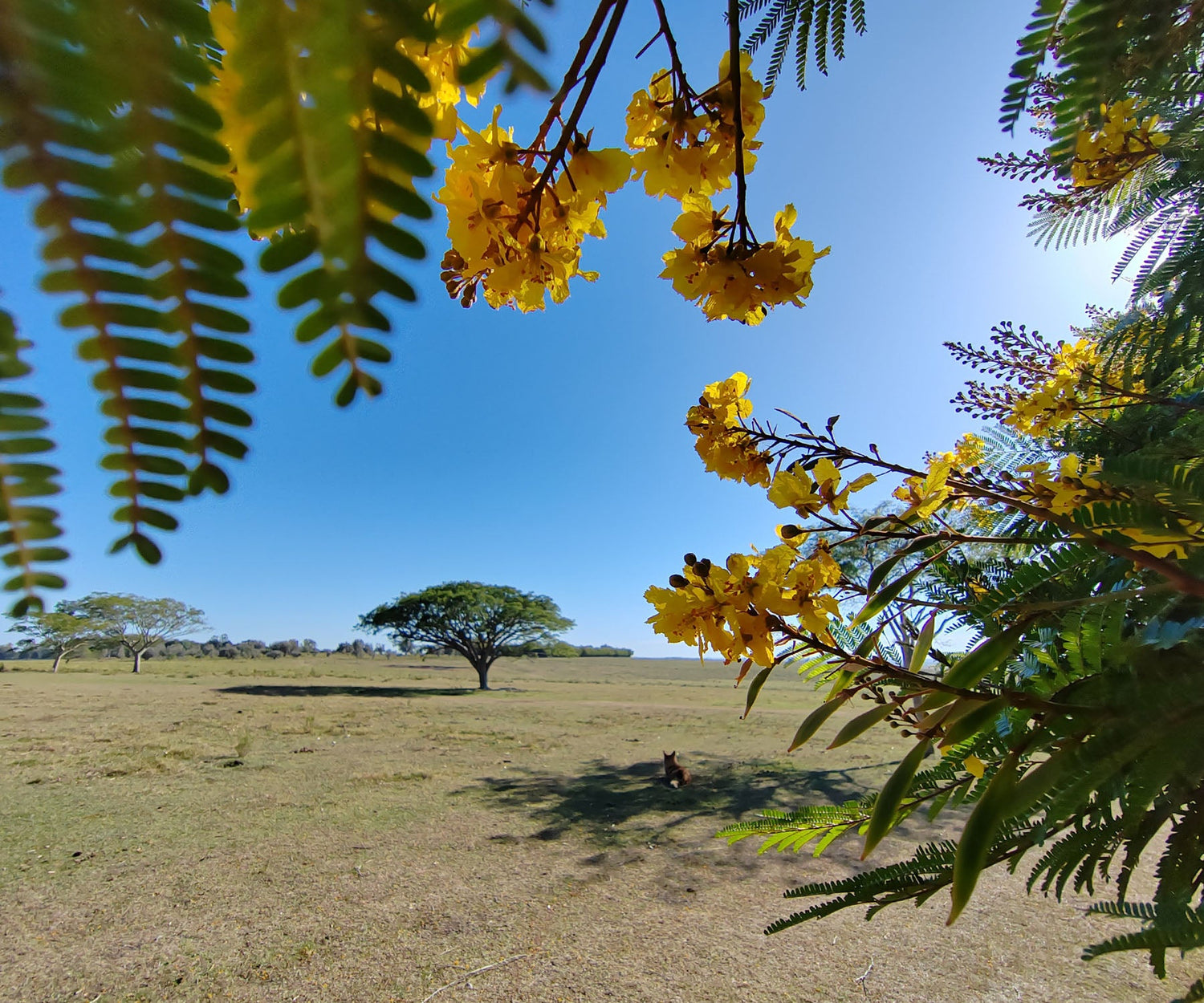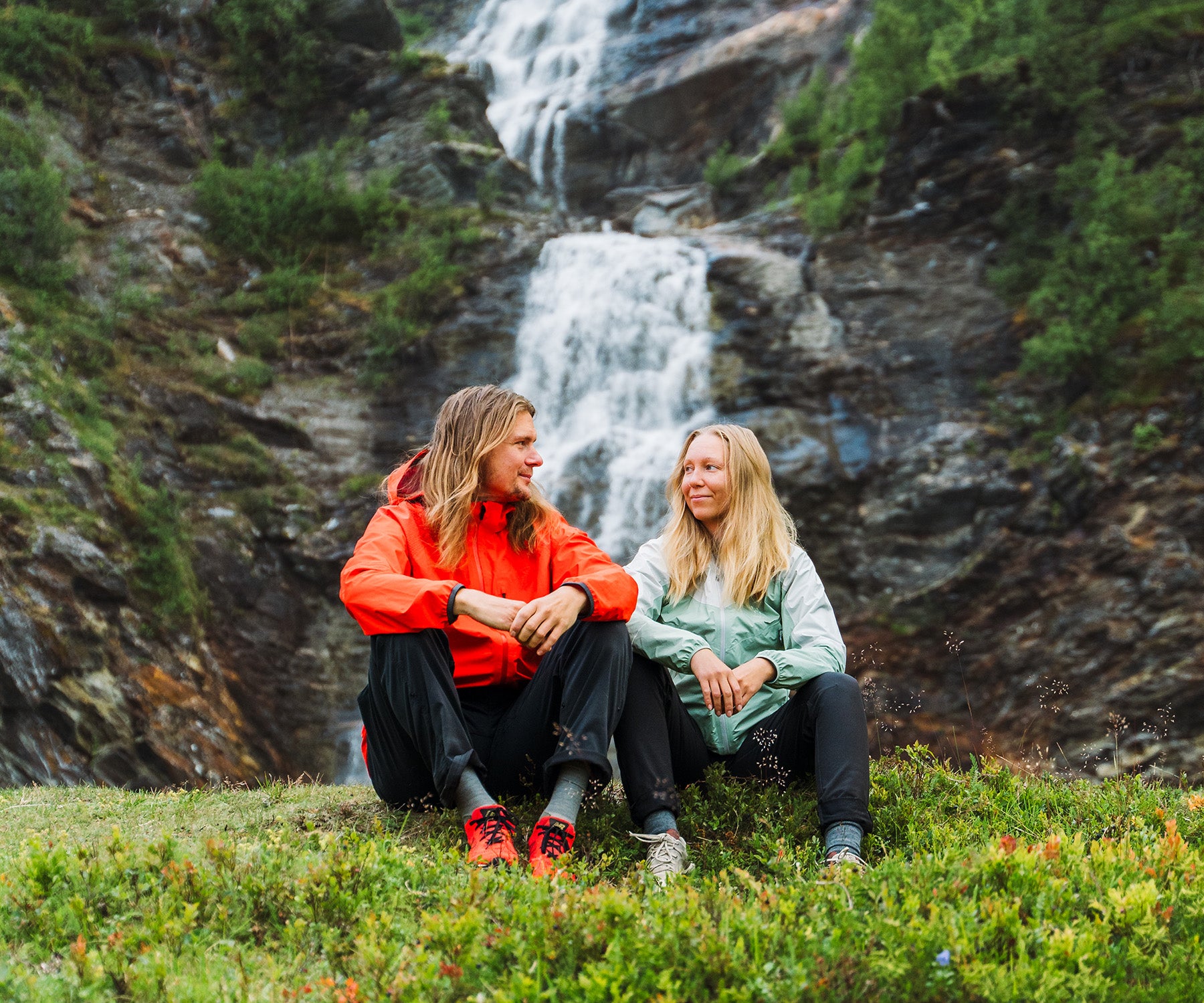Socks that feel like life, nurturing the diversity of life and nature.
Sukkamestarit is the world's first, and so far only, sock factory to use only NATIVA-certified merino wool in its products. NATIVA certification guarantees a production process that respects nature, animals and people in all parts of the chain.
How does NATIVA contribute to the ecological production of wool and the preservation of biodiversity?
"Let's leave nature and the environment in a better state for our posterity than it is today." With these words, Diego, the owner of our wool farm, summed up his own philosophy as a farmer about ecology and sustainability. Respect for nature, and especially water, is very much at the forefront of wool production.
The sheep are reared in the beautiful landscapes of Uruguay, where agriculture has a long tradition. La Magdalena is now in its third generation, and a new generation is coming into the fold.
In order to continue farming from one generation to the next, it is important that nature is preserved. Nativa encourages farming and animal husbandry with the aim of producing high quality fibre without damaging the environment. We believe that this can be achieved productively and profitably when we are in harmony with and respect the environment.
Nativa ensures that the capacity and quality of its sheep farms are managed in a way that protects and even improves the environment.
At the heart of farming is protecting and enhancing nature's most valuable assets; such as soil, biodiversity and water.

Photo: In the production of NATIVA merino wool, rainwater resources are utilized, and groundwater resources are not wasted for industrial use.
Water saving
Without water, there is no life. Without water, there is nothing.
In Uruguay, saving fresh drinking water is therefore a major priority, as is the use of renewable energy. 98% of Uruguay's energy comes from renewable sources such as wind and hydroelectric power. These energy sources are also used effectively in agriculture.
In wool production and sheep management, as well as in wool processing, rainwater harvesting and the innovative use of rainwater instead of fresh drinking water is impressive.
The La Magdalena farm has two large 'reservoirs' into which rainwater is diverted and from which it is pumped to pasture watering points using solar power. Some grazing sheep also have direct access to the water bodies to eat and drink.
The wool processing plant's own ecosystem recycles waste and water up to three times
Our wool is washed, carded and combed at the Lanas Trinidad wool processing plant in Trinidad, Uruguay. Lanas Trinidad has developed its own ecosystem to produce its own energy and water needs for wool production. The processing plant's ideology is based on three fundamental pillars:
- A production design that minimises waste
- Recycling or reuse of by-products and materials
- Renewal of nature
About 7 km from the wool processing plant is a rainwater harvesting area with a volume of 1 million cubic metres. The rainwater harvesting basin was created in partnership with a farmer in the area, who has shared access to the basin for farm use. The water is 100% rainwater and is not diverted from rivers or used to tap groundwater reserves. The water is collected from a 400 hectare catchment area into a 40 hectare lake.

Photo.
Water from the area is pumped to a wool processing plant. The water requirement is 800 cubic metres per day. On an annual basis, 200 800 cubic metres, or 200 800 000 litres, of drinking water are saved in the wool processing alone!
Sukkamestare Finland also plays an important role in saving water. When our products are not precipitated during production, we save 700 000 litres of water per year.
Fertilisers and chemicals
On farms, the use of fertilisers is strictly regulated under the NATIVA Protocol to protect the environment and animals. Fertilisers may only be used when absolutely necessary and justified.
Farmers must have a soil management plan that takes into account the different types of soil on the farm; sowings, pastures, set-aside land, etc.
Excessive use of fertilisers is not allowed. Farmers must use a minimum amount of fertiliser to avoid unnecessary residues and contamination. In addition, farmers must use as little pesticides as possible. Preventive use of pesticides is prohibited. The pest management plan must take into account the risks to animal and human health and the damage to the environment. The plan must also contain information (list of ingredients) on the pesticides used. The use of pesticides will be subject to third party control.
Only biodegradable detergents are used for wool treatment and cleaning.
Waste recycling
Lanas Trinidad has won several awards for the ecosystem it has developed, where natural resources are not consumed but created.
In addition to using rainwater, they have a unique way of recycling waste and wastewater from production.
The wool is naturally fatty, or lanolin. Lanolin is released when the wool is processed. Lanas Trinidad's lanolin is collected and used by the cosmetics industry. The production process also produces dirty washing water and a mass of impurities and wool. These are separated at the production stage, where the dirty washing water is sent to the adjacent waste and water treatment plant.
At the plant, the water is channelled through 22 lagoons, where a natural bacterial population breaks down the impurities in the water and gravity drains and "shifts" the water from one basin to another. In the final lagoon, the water is returned even cleaner than when it entered production. The lagoon area, including forest, covers about 140 hectares.
The biomass generated from the production is diverted to an adjacent methane gas field, the size of a football field. The biomass is decomposed by natural bacteria. This produces methane gas, which is burned to meet the plant's electricity needs.
Waste and waste water are recycled and decomposed so that no waste is produced.
New forest closes the ecosystem loop
At the last "station" of the lagoons, the water is clean and the lagoon is full of life. Turtles, fish and birds swim in the water. There are horses drinking on the shores. In the background is a beautiful eucalyptus forest, several hectares in size. The forest is fertilised with biomass from water purification. The forest contains trees in various stages of growth.
Eucalyptus is a fast growing tree, reaching harvesting age after only 8 years of growth. Trees at harvesting age are felled and used to heat water for the plant.
The forest's only function is not to provide energy, but also to store carbon.







